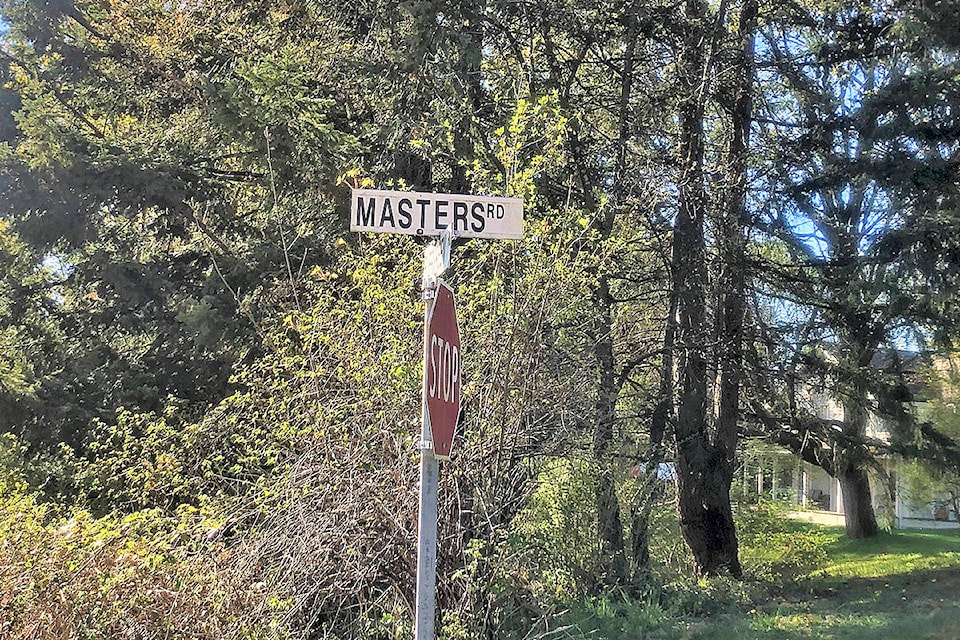By Beth Boyce,
Museum at Campbell River
Following our article in February exploring the naming history of Campbell River, we were contacted by members of the Masters family to share the story of Masters Road. For such a short street (only one block remains today), there were a lot of stories to tell!
When looking at the experiences of the settler families that came to Campbell River, Quadra Island, and the other communities in the North Island region, a common thread emerges. These families purchased or pre-empted land (usually already logged) in order to establish family farms. After some years of hard labour, while failing to make ends meet or get ahead, these families began turning to other industries to either supplement, or replace, their farms. They turned to logging, fishing, trapping, guiding, prospecting, the list goes on.
For Frank and Anne Masters, this pattern was reversed, they started out in forestry and later switched to farming. They met when both worked for the Cameron Logging Company in 1916. Anne Connell was the camp cook. In 1917 they were married and began their family. In about 1920, when the Logging Company was moving out of the district, the Masters acquired 100 acres of the land that had just been logged to establish their farm, named Rahe’en for the village in Ireland where Anne was born.
A newspaper article published in the Comox Argus on October 27, 1932 recounts in detail how they faired.
After twelve years of intensive, hard work, Frank and Mrs. Masters have forty acres of land cleared and planted this year; forty acres that has given them eighty tons of hay and fodder and sixty tons of mangels and other root crops.
…
Besides the forty acres, Rahe’en is the home of twenty head of cattle, the cream from which goes to the creamery at Courtenay every day… Fifty sheep help with the revenue of the farm. This year thirty turkeys, enough chickens for home use, and a number of animals that have cleared the mortgage on many a place – pigs – are in evidence.
In the end the Masters cleared and cultivated forty-seven acres of their property.
In order to access his markets, Frank Masters and his team of horses built a road out to his farm, which was located at the corner of Evergreen and Petersen Roads today. Simply called Masters Road, it wound through the logged off forests from the farm to the waterfront near to the wharf and the hospital. One section of his road survives today as St. Ann’s Road.
In addition to the farm, Mrs. Masters ran a popular tea house at Elk Falls starting in 1933. This little log cabin establishment was wildly popular, and feted everyone from the locals to famous Hollywood movie stars like Mae West. Old timers remember that Mrs. Masters made the very best ice cream. She was known for serving tea in real china, and all the food she served was made from fresh produce and meat from Rahe’en farm. The tea house operated until it was ordered to close by the government when developing Elk Falls Provincial Park in 1938.
A housefire at the farm in 1939 tragically claimed the life of Frank Masters.
Following the fire, the family rebuilt the farmhouse, but in the end could not keep up with the farm, so it was sold. Anne later ran a boarding house, and remained an active member of the community. As the town of Campbell River expanded rapidly in the 1950s, the winding Masters Road was quickly swallowed by the new planned subdivisions. Soon all that remained was one small block, connecting to Evergreen before changing to Munson Road.
Do you know of any other stories of Campbell River’s past? Are there other names in our community that you would like to learn more about? Let us know, because sometimes even the shortest of streets can reveal big stories.
A longer version of this article, with historic photos and maps, can be found on the Museum’s blog.
